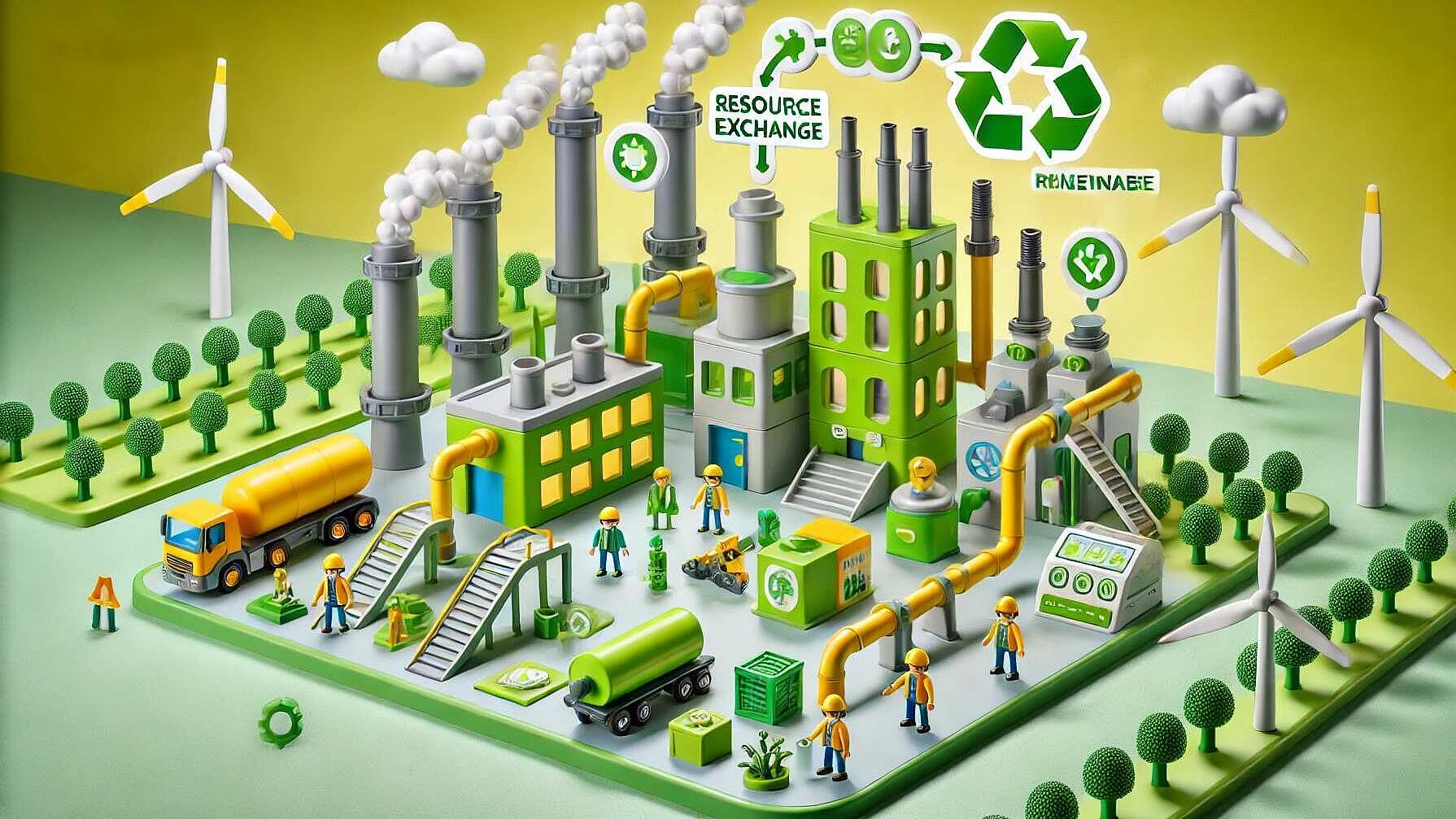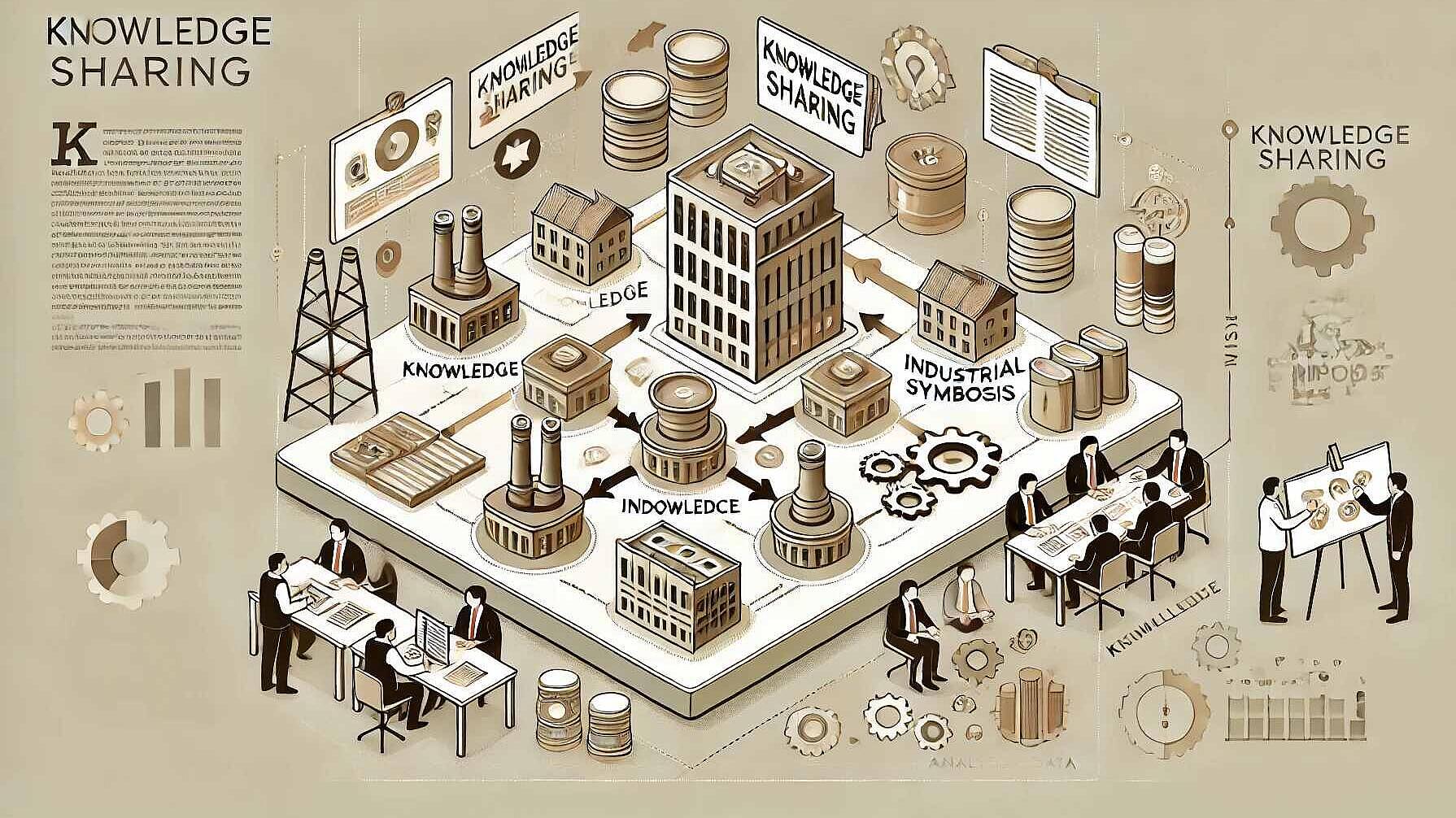 Circular Economy
Circular EconomyDemystifying Industrial Symbiosis: A Comprehensive Guide to Opportunity Identification
Summary
The paper highlights industrial symbiosis (IS) as a practice of resource, energy, water, and material exchanges among industries from different sectors to enhance resource efficiency, reduce waste, and minimize environmental impacts. Over €130 million has been allocated for the development of IS methodologies and tools in Europe, but there is room for growth in market adoption.
Opportunity identification in IS involves mapping resource flows, screening resources for quality and availability, and matchmaking potential exchanges, with challenges including complexity, human-centered processes, data availability, and long-term viability evaluation. To improve opportunity identification, the paper recommends involving local entities for better collaboration, establishing data exchange mechanisms, testing IS solutions at pilot and laboratory scales, evaluating opportunities against long-term sustainability and industry shifts, and using existing tools and databases like Synergie and MAESTRI 4TIS.
The conclusion reaffirms the significance of IS for achieving resource efficiency and decarbonization and suggests that understanding these processes, overcoming challenges, and implementing proposed strategies are essential for realizing IS potential.
Open full article
Demystifying Industrial Symbiosis: A Comprehensive Guide to Opportunity Identification
The following article is a summary of the report “Mechanisms for the identification of IS opportunities” delivered by the EU project CORALIS. And it is also a training article for the Enerwhizz, which is a fast-paced quiz on energy transition, greentec and renewables. Answer 5 YES-No questions in 45 seconds to earn cash coins and win prices delivered to your office or home. No registration, just play!
Check: https://enerwhizz.app/
Industrial Symbiosis
The concept of industrial symbiosis (IS) has garnered significant attention in recent years due to its potential for energy and resource savings. In Europe alone, over €130 million has been invested in methodologies and tools aimed at facilitating the uptake of IS, primarily for assessing potential solutions and synergies among companies. However, while there have been initiatives centered around IS in Europe, there is still a need to fully exploit its potential and facilitate broader market adoption across EU industrial areas.
What is Industrial Symbiosis?
Industrial symbiosis (IS) is a collaborative approach involving industries from different sectors that exchange resources, energy, water, and materials. The goal is to optimize resource utilization, reduce waste generation, and minimize environmental impact. IS can involve the exchange of by-products, waste heat, water, and other resources that would otherwise be discarded.
Opportunity Identification in Industrial Symbiosis
The process of identifying opportunities for IS involves several key steps:
1. Mapping
Mapping involves identifying and documenting available physical and energy resources within a specific industrial area or region. This step does not require detailed information from participating organizations. Examples of mapping include identifying waste flows by categorization using the European Waste Classification (EWC) codes or utilizing databases of resources.
2. Screening
Screening follows the mapping process and involves categorizing different resources in more detail, along with their owners, to determine their suitability for symbiotic exchanges. This step may include assessing the quality, quantity, and temporal availability of resources.
3. Matchmaking
Matchmaking involves identifying feasible matches between resources (sources) and receivers (sinks). This step includes analyzing technical feasibility, generating information for economic assessments, and developing conceptual designs. The focus is on matching the quality and quantity of resources, including the potential need for upgrading source quality and matching quantities with demand from a temporal perspective.
Challenges in Opportunity Identification
Several challenges can arise during the opportunity identification process:
- Complexity: Identifying IS opportunities can be complex due to the involvement of multiple actors, diverse resource streams, and varying technical requirements.
- Human-centered nature: The process is often human-centered, relying on collaboration, communication, and trust-building among stakeholders.
- Data availability: Access to accurate and up-to-date data on resource streams, technologies, and regulations can be limited.
- Long-term perspective: Assessing the long-term viability of IS solutions can be challenging due to uncertainties in industrial processes and market dynamics.
Suggestions for Identifying Opportunities
Based on insights from the CORALIS project and other initiatives, here are some suggestions for identifying potential revalorization opportunities:
- Involve local entities: Engaging local organizations, such as industrial federations or chambers of commerce, can facilitate collaboration and knowledge sharing.
- Ensure data exchange flow: Establish clear mechanisms for data sharing and confidentiality among participating companies.
- Test IS solutions: Conduct laboratory and pilot-scale testing to validate the technical feasibility and economic viability of IS solutions.
- Consider long-term development: Evaluate IS opportunities in the context of long-term sustainability goals and potential industrial transformations.
- Utilize existing tools and databases: Leverage available resources, such as the Synergie database and the MAESTRI 4TIS tool, to map, screen, and match resources.
Conclusion
Identifying opportunities for industrial symbiosis is a crucial step towards achieving resource efficiency and decarbonization goals. By understanding the processes involved, addressing the challenges, and implementing the suggestions outlined in this article, industries can unlock the full potential of IS and contribute to a more sustainable future.
If you read the full article, you are perfectly equipped to play and win. And to have fun with friends leagues, leaderboards, missions and whizzers. And likely in your language as we are supporting 12 languages.
And if you found nuggets you want to have a deeper look at – check the source document, the report “Mechanisms for the identification of IS opportunities” delivered by the EU project CORALIS.
https://www.coralis-h2020.eu/project-news/coralis-work-on-is-opportunities-identification-mechanisms-d3-1/



